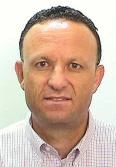Photo courtesy UNRWA
Palestine refugee students continually and consistently outperform public school students by a margin equivalent to more than one additional year of learning. How does a disadvantaged group maintain such a high achievement level? One factor that is important in explaining this result is the concept of resilience. Resilience starts with adversity. The capacity for resilience in people helps negotiate adversities with the support of relevant opportunities and services.
The system responsible for helping educate Palestine refugees is the United Nations Relief and Works Agency, or UNRWA. UNRWA schools are achieving higher-than-average results in international assessments despite the challenging and adverse circumstances around them.
We highlight how a resilience approach – that includes effective classroom practices of teachers, strong school leadership, assessments and shared accountability for learning – can support adaptability and performance in risk contexts. The study, Learning in the Face of Adversity: The UNRWA Education Program for Palestine Refugees describes the findings in a mixed-methods approach.
UNRWA’s educational system, one of the largest non-governmental school systems in the Middle East with 500,000 refugee students each year, utilizes a school-family-community partnership to create a culture of learning that recognizes the vulnerable environment the children live in and promotes collaboration amongst the school, teacher, parent, and community all focusing on student achievement and well-being. UNRWA manages nearly 700 schools, employs 17,000 staff, educates more than 500,000 refugee students each year, and operates in the West Bank, Gaza, Jordan, Lebanon, and Syria. The report focuses on three regions: the West Bank, Gaza, and Jordan.
UNRWA schools have created a distinguished learning community centered on the student. Students perform well despite their socioeconomic disadvantages and parents’ education, compensated by the students’ self-confidence, parental support, and involvement in school activities.
Key findings of the study include:
- UNRWA selects, prepares, and supports its education staff to pursue high learning outcomes. UNRWA teachers’ colleges attract top high school graduates to enroll free of charge and with guaranteed employment. There are explicit standards regarding what students must know and receive guidance on how to achieve these outcomes. UNRWA also requires classroom experience (built into the curriculum at their teachers’ colleges) and a mandatory two-year intensive training program focused on classroom instruction after they are hired.
- Time-on-task is high in UNRWA schools, and this time is effectively used. The proportion of time spent on learning activities in UNRWA schools compares favorably with successful systems in developed countries. UNRWA schools appear to use this time to engage students through confidently lead collaborative activities, discussions, and assignments, all promoting greater student participation. In the West Bank and Gaza, for example, most of the teachers’ class time is dedicated to teaching.
- UNRWA schools have fewer management layers and an excellent assessment and accountability system. While both public and UNRWA evaluation systems include classroom observations and other criteria, UNRWA evaluations are more rigorous and frequent. Professional development and performance evaluations are requirements to remain in the teaching profession within the UNRWA system, with incentives for good performance and sanctions for poor performance.
- UNRWA schools are part of a wider community and culture of learning that supports the child and ensures that the education received is meaningful and relevant. The sense of community appears stronger because of the fact that UNRWA teachers originate from the same at-risk population, are part of the same communities as students, and have themselves been through the UNRWA system. In sharing these difficult living situations, teachers are accessible role models for their students, providing them with not only academic guidance but also socio-emotional support.
The resilience approach documented in the case of Palestine refugees is applicable to other school systems. Any system can draw lessons from our experience by building on the model to create a community and culture of learning that recognizes the adversity of vulnerable groups and promotes collaboration amongst the school, the teacher, the parent and the community, all focusing on student achievement and well-being.
This is not to say that there is no room for improvement. Given that resilience is a process, then more can be done. Resilience is not leaving at-risk populations to fend alone, but providing the needed resources aligned to this process.
School systems need to gauge and promote a set of assets and opportunities that better support students to manage the adversities they face, protecting them from harm, and helping them achieve their educational outcomes. Even in rapidly changing contexts, assessing these assets and opportunities is crucial to understanding why outcomes are achieved and how to support such processes.
Follow Harry Patrinos on the Education for Global Development Blog and @hpatrinos
Related
Education Resilience Approaches





Join the Conversation